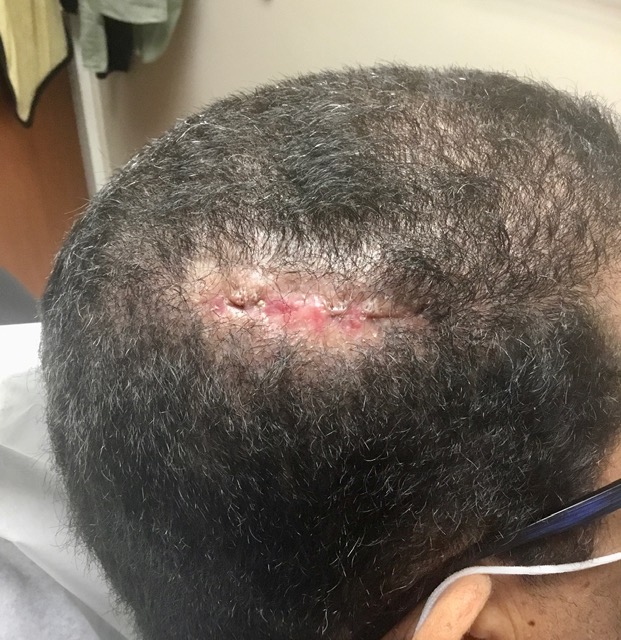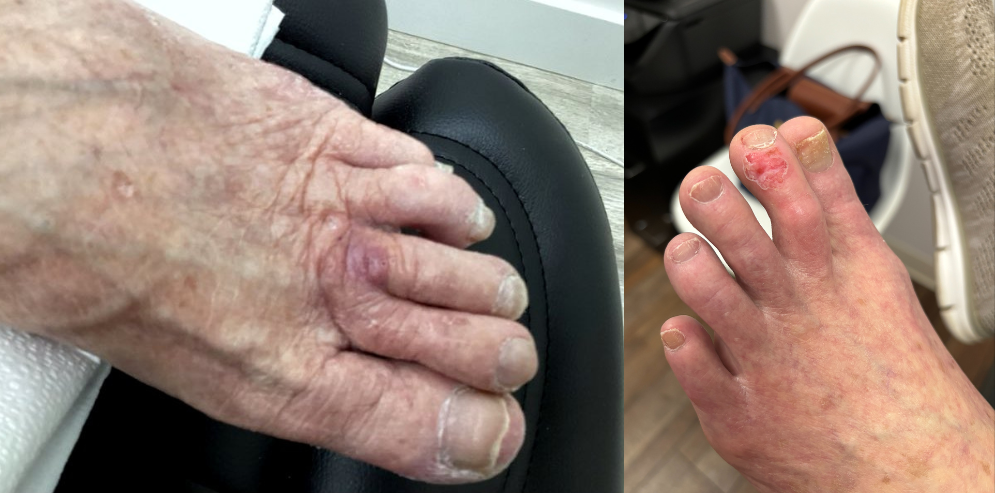
Skin cancer is highly correlated with excessive ultraviolet light exposure, and that means the places most likely to develop skin cancer are the places that see the most sun—including areas like the ears, neck, and scalp. With that said, the scalp is one of the most difficult areas for any single person to effectively examine on their own. We’ve laid out the most effective way to check for skin cancer on the scalp at home—but it’s always important to check in with a medical professional if you notice any unexplained changes to your skin.
What Does Skin Cancer Look Like on the Scalp?
Since all forms of skin cancer tend to appear in the body’s most sun-exposed areas, you should know how to identify all common forms of skin cancer on the scalp. Here, we’ve covered the basics:
- Melanoma on the scalp most commonly appears like an asymmetrical mole with uneven borders and discoloration. This type of skin cancer tends to grow quickly, so if a mole is changing shape or growing in diameter, you should have it looked at by a professional as soon as possible.
- Basal cell skin cancer on the scalp tends to look like a small open sore, a sore that never fully heals, a red, irritated patch of skin, or a waxy, scar-like growth. The disease can also take other forms.
- When squamous cell skin cancer appears on the scalp, it might look like a growth with a raised edge and a depressed center, or a rough patch of skin that may bleed or crust over.
Pictures of skin cancer on the scalp can be seen here:

If you notice any changes to your skin at other locations, our guide to the appearance of skin cancer may be able to help you plan your next steps
How to Check for Skin Cancer on the Scalp
Annual professional full-body cancer screenings are the gold standard in skin cancer detection, but if you feel a bump or notice something strange in a hard-to-see area on your head, it’s important to know how to get a closer look.
If you can’t make it into a professional office immediately, here’s how to check for skin cancer on the scalp:
- Pick up a handheld mirror, and find a well-lit room to perform the inspection. You’ll need to hold up the handheld mirror in opposition to another mirror in order to see most parts of your head.
- Use a comb or your fingers to separate small sections of your hair, then lift up each section and line up the handheld mirror in position.
- Look at the smaller mirror’s reflection in the bigger mirror—you should be able to see exactly what the smaller mirror is reflecting on your scalp. (Think back to the last time a hairdresser showed you the back of a new haircut if you have trouble picturing this process.)
- Although you might devote extra attention to any area where you’ve noticed something unusual, it’s important to be as thorough as possible. Try to find a friend or family member who can help you see the areas that are hardest to reach.
Treat Skin Cancer on the Scalp with Image-Guided SRT
Image-Guided SRT can treat common forms of skin cancer like basal cell skin cancer and squamous cell skin cancer, all without risk of surgical scarring or major interruptions to your lifestyle. If you or a loved one has been diagnosed with skin cancer, ask your healthcare provider if Image-Guided SRT is the right choice. For a more informed conversation, find out how it works today.








